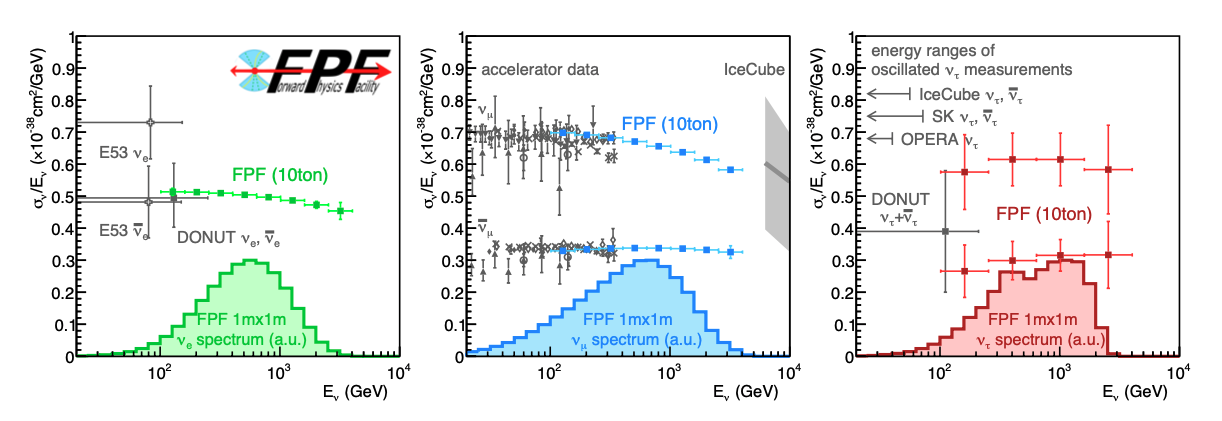The LHC is the highest energy particle collider built to date and it is therefore also the source of the most energetic neutrinos created in a controlled laboratory environment. Indeed, the LHC produces intense, strongly collimated, and highly energetic beams of both neutrinos and anti- neutrinos and all three flavors in the forward direction. Although this has been known since the
1980s, only recently have two detectors, FASERν and SND@LHC, been installed to take advantage of this opportunity. These pathfinder experiments have just recently directly observed collider neutrinos for the first time. By the end of LHC Run 3 in 2025, these experiments are expected to detect approximately 104 neutrinos. The FPF experiments, with larger detectors and higher luminosities, are projected to detect 105 electron neutrino, 106 muon neutrino, and 104 tau neutrino interactions, providing approximately 100 times more statistics over the installed experiments, enabling precision measurements for all three flavors, and distinguishing tau neutrinos and tau anti-neutrinos for the first time.
Fig. 4 displays the measured neutrino-nucleon charged current scattering cross sections for all three neutrino flavors. The low-energy region has been well-constrained by neutrino experiments using existing accelerators. IceCube has also placed constraints on the muon neutrino cross section at very high energies using atmospheric neutrinos, although with relatively large uncertainties. The histograms at the bottom of each panel show the expected energy spectra of interacting neutrinos at the FPF, which peaks at ∼ TeV energies, where currently no measurements exist.
Taking into account the projected statistical precision for the inclusive cross section, the FPF will enable improved calculations of neutrino scattering rates, a prerequisite for searching for, e.g., anomalous neutrino interactions in the TeV range, and validate cross section predictions required in neutrino oscillation analyses, such as those carried out at KM3NeT and IceCube. Indeed, precision SM calculations of neutrino cross sections make possible unique tests of neutrino interactions at the TeV scale, and the FPF will be able to test their flavor universality across all three generations, thanks to a large sample of 104 tau neutrinos.

